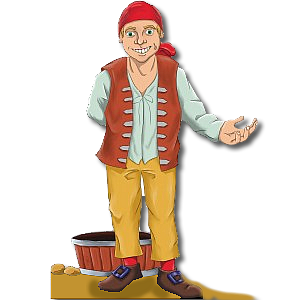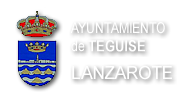
Piracy became even morerife after the Conquest even though the land passed from being an unprotected territory to part of the Spanish Empire. Besides, ever since Columbus had used the place as a port of call for the ships which took the route to the Americas, the waters of the archipelago had become infested with greedy pirates encircling the islands awaiting the arrival of the Indies fleet which was sure to come loaded down with treasures from the New World. Equally their presence was often found in warfare perpetrated at the onset of the Modern Age by foreign powers, Spain, Portugal, England, France and Holland fought over the Virgin territoties of the Americas and any place to overcome the enemy was perfect. This way there came about the use of “letters of marque” which were licences conceded to experienced pirates by the Crown who supposedly were fighting under the flag when in reality they were plundering for booty. Slavery became a huge business as the American Indian was considered to be under-productive. Due to this concept, Guinea and other points of the African coast were seen as suppliers of working men who were sold at the price of gold by slave traders from the main European cities. Business men who invested large sums of money in providing slave ships fount a safe refuge in the Canaries half-way berween America and Africa. A variation of the slave trade could be found in the practice of the Barbary pirates which incluede Turks, Algerians and Moroccans. They armed powerful fleets to kidnap people and only released them to their families on the payment of large sums of money. Algiers was for centuries the main slave market of the world where hundreds of Canary Islanders could be bought. Together with greed and politics, it must also be suggested that religious motivation guided acts of piracy, for many corsairs took up a type of Calvinistic crusade which turned them violently against religious orders and symbols of Christianity such as sculptures and paintings and holy places.
Maciot de Béthencourt, kinsman of Lorenzo the “Conquistador “ (conqueror), who made him Governor of the island was married to Princess Teguise, daughter of the last Aborigine King Titi-Roy-Gatra and founded the capital town of the island which proudly held the Princess´name. Lorenzo Betancourt
How these ancient dwelling places smell, how they ooze with age, how they breathe the passage of time through their broad rafters, through the floors and ceilings and the staircases which creak with carpets and even without! Leandro Perdomo
How much history in the sullen stones and noble houses, in their palaces, convents, churches and hermitages!. Here everything appears interesting and the outsider will inevitably find himself facing events and indisputable historic deeds which will envelop him in the past aromas of the old metropolis. Agustín de la Hoz
The defence of the Canaries has always been a long term problem. Isolated from the rest of Spain by their insular and Atlantic condition, the Canaries were the object of infinite defence, projects carried out by military engineers to safeguard the islands. The most famous and determined of the long series of plans was the one carried out by Leonardo Torriani in 1588 following the orders of King Felipe II.… until recent times peace has been unknown in the islands. Their history is that of a people constantly alert, tension in their muscles and weapons at the ready to ensure the success of their independence in the face of all foreign invaders. Antonio Rumeu de Armas











